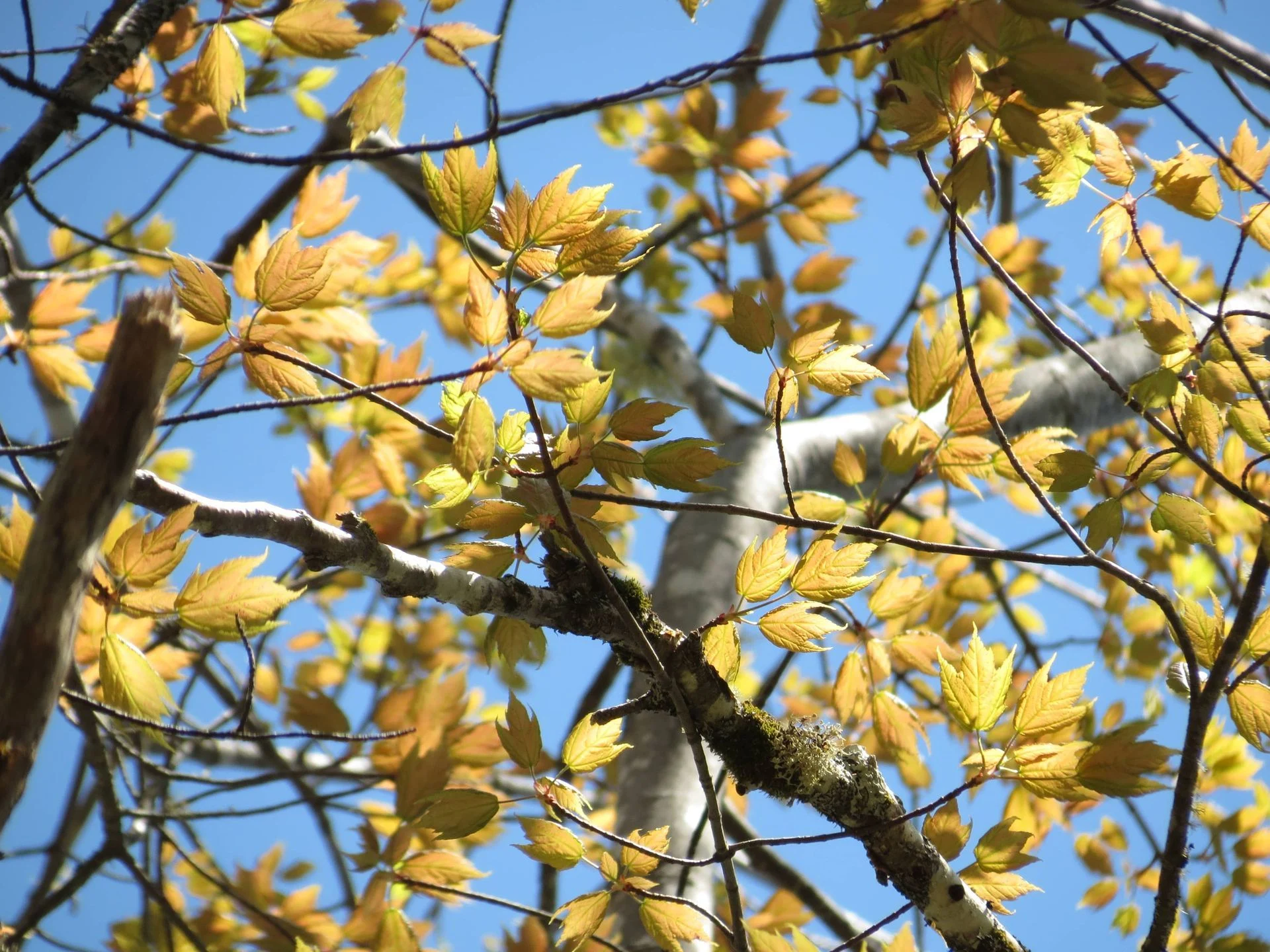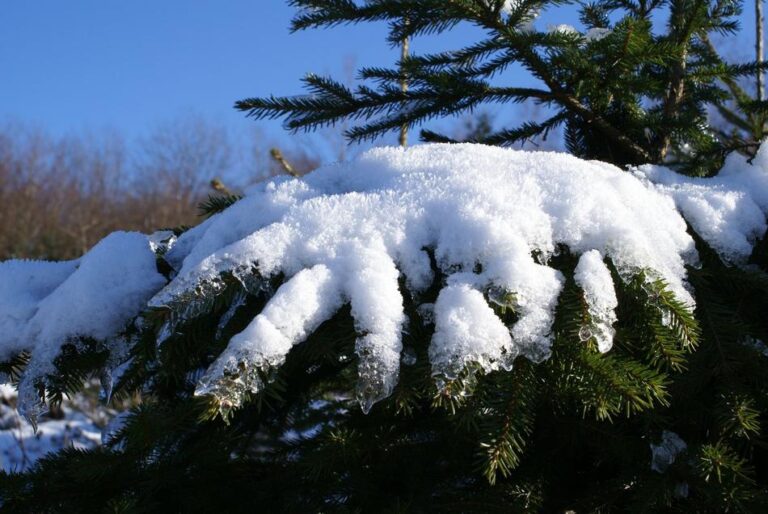You’ve likely seen the familiar sight of a Black-capped Chickadee landing on the branch of a native oak tree, pulling out a fat caterpillar hidden beneath a leaf, and flying off to feed its waiting chicks. What might not be immediately obvious is that this small, everyday interaction reflects a deep and ancient energy exchange—one that has developed over millions of years and relies entirely on native plants as the backbone of garden ecosystems. These plants aren’t just for looks; they are essential components that keep the entire local ecosystem functioning.
At the most basic level, life relies on the movement of energy. Plants serve as the starting point in this process—they harness sunlight through photosynthesis and store that energy within their tissues. Because of this role, plants form the base of all land-based food chains and are known as primary producers. When a caterpillar feeds on a leaf, it taps into that stored solar energy, making it one of the first consumers in the food web.
What many of us don’t realize, however, is that energy transfer in nature follows a fundamental principle called the “10% rule.” As energy moves from one trophic level to the next, from plant to herbivore to predator, approximately 90% is lost as heat through metabolic processes. This means by the time energy reaches an insectivore like our Chickadee, it represents just a tiny fraction of the original solar energy which was captured and stored by plants. Therefore, in a garden, an energy pyramid with plants at the base must store a substantial enough energy to support the layers above it.
This inefficiency makes every calorie of plants’ stored energy incredibly valuable, especially to wildlife higher on the food chain. If we think of our gardens as living energy-processing systems, we begin to understand why having the right plants, specifically native plants, matters so profoundly for supporting wildlife.
For roughly 350 million years, plants and insects have co-evolved and optimized to depend on each other. Through this evolutionary process, many insects have become specialists, able to feed only on specific plant species with which they share a long evolutionary history. These relationships are often so specialized that when non-native plants replace natives, the entire food web suffers.
I recently read in Prof. Doug Tallamy’s book, The Nature of Oaks, that the native oak trees support over 500 species of caterpillars, while non-native ginkgos host a mere 5 species. This significant difference occurs because most insect herbivores simply haven’t evolved mechanisms to overcome the novel chemical defences of non-native plants.
Perhaps the most fascinating concept of “keystone plants.” Tallamy’s research shows that just 14% of native plant species support an astonishing 90% of caterpillar biomass. These powerhouse plants are ecological cornerstones, converting solar energy into forms that support countless wildlife species.
New Brunswick’s provincial bird, the Black-capped Chickadee, weighs no more than three nickels yet demonstrates perfectly why native plants matter. These birds with black caps and bibs and white downy cheeks are more than just welcome visitors to your bird feeder—they’re critical links in the native plant food web.
During breeding season, the Black-capped Chickadee’s diet shifts dramatically to consist of 80–90% animal matter, primarily caterpillars. These protein-rich caterpillars are perfect for growing chicks. But here’s something you didn’t know: a single pair of chickadees must find 6,000–9,000 caterpillars to raise just one brood of nestlings.
Imagine having to find and deliver a fresh caterpillar every few minutes, from sunrise to sunset, for weeks at a time. Chickadees do exactly that when raising their young. They’ve evolved to spot subtle clues, like chewed leaves, to help them locate these nutritious-but-often-well-hidden insects. But they can only find enough caterpillars in habitats filled with native plants, the same plants their species has relied on for generations.
When we fill our gardens with non-native plants, we’re essentially creating food deserts for chickadees and other native birds, making it impossible for them to find the thousands of caterpillars they need.
While our chickadee story highlights the importance of native plants for birds, these plants also form the backbone of pollinator networks that maintain biodiversity and ecosystem resilience.
In Maritime Canada, several pollinators face serious conservation challenges. The Maritime Ringlet butterfly is found only in 10 salt marshes around Chaleur Bay in New Brunswick and the Gaspé Peninsula in Quebec. This endangered butterfly’s entire life cycle depends on salt-meadow cordgrass, with adults feeding primarily on sea lavender.
Other endangered pollinators in the region include the Rusty-patched Bumble Bee (listed as Endangered), the Yellow-banded Bumble Bee (listed as Vulnerable in Nova Scotia), and the iconic Monarch butterfly. These species face numerous threats: habitat loss, climate change, pesticide use, and the decline of the native plants they depend on.
Research shows that invasive plants tend to attract more generalist pollinator species, while specialist pollinators remain strictly dependent on native plants. The result is a less specialized, less resilient pollination network that cannot support the full diversity of native pollinators.
The good news is that by planting native species in our gardens, we can create vital habitat steppingstones for wildlife, benefiting not only chickadees but also a wide range of endangered pollinators. Native plants are specially adapted to our ecosystems and offer food and shelter for countless insects, birds, and mammals. Here are a very few of some particularly powerful native plants for pollinator-friendly Maritime gardens:
Trees and Shrubs
● Red Maple (Acer rubrum) and Sugar Maple (Acer saccharum): Early Spring bloomers that provide vital nectar for bees and butterflies.
● Chokecherry (Prunus virginiana): Supports a wide array of butterfly and moth species.
● Pussy Willow (Salix discolor): Among the earliest bloomers, offering crucial early-season forage for bees.
● Rhodora (Rhododendron canadense): Loved by both bees and hummingbirds.
● Black Chokeberry (Aronia melanocarpa): A multi-season shrub that feeds native bees and provides fall berries for birds.
● Bush Honeysuckle (Diervilla lonicera): A hardy ground-cover shrub visited by bees and moths.
● Wild Red Raspberry (Rubus idaeus) and Lowbush Blueberry (Vaccinium angustifolium): Both offer abundant nectar for specialist native pollinators.
Forbs (Wildflowers and Herbaceous Plants)
● Swamp Milkweed (Asclepias incarnata): An essential host for monarch butterflies and a favourite of many bees.
● Joe-Pye Weed (Eupatorium maculatum): A tall, striking plant that supports a wide variety of butterflies and bee species.
● New York Aster (Symphyotrichum novi-belgii) and Calico Aster (Symphyotrichum lateriflorum): Late bloomers that provide fall forage for butterflies and bees.
● Goldenrods (Solidago spp.): Including Canada Goldenrod and Rough-Stemmed Goldenrod, these are crucial for supporting pollinators well into autumn.
● Wild Mint (Mentha arvensis): A fragrant herb that attracts a diversity of bees, butterflies, and flies.
● Black-Eyed Susan (Rudbeckia hirta): A cheerful bloomer loved by bees, butterflies, and beetles.
Likewise, there are hundreds of native plants, shrubs, vines, and forbs where you can select to design your pollinator-friendly gardens this spring. By choosing a variety of native plants that flower from early spring to late fall, you can provide continuous nectar sources for pollinators and contribute meaningfully to biodiversity conservation right in your own backyard.
When choosing native plants, try to plan for a sequence of blooms throughout the growing season. That way, there’s always something in flower to support pollinators. Bright colours like blue, purple, and yellow tend to attract day-flying species—think bees, butterflies, and even some flies. At night, you’ll notice that white, fragrant flowers pull in moths, which are often overlooked but incredibly efficient pollinators.
And don’t forget the underappreciated visitors: beetles, hoverflies, and all the lesser-known players in the pollination game. They need our support, too.
Our home gardens might seem small, but they matter more than ever. North America has lost nearly half its songbird population in the last few decades, and over 230 species are now at risk of extinction. These stats aren’t just numbers—they reflect the quiet vanishing of familiar sounds and sights from our lives.
But here’s the hopeful part: if every garden in your neighborhood added just a patch of native plants, we could create a network of habitat steppingstones. Even a few square feet of goldenrod or asters can help pollinators navigate fragmented landscapes.
Start small. Maybe it’s just a corner of your yard where you swap in a native shrub or let wildflowers grow. The impact adds up.
By choosing native plants for your garden, you’re not just creating a beautiful space—you’re actively participating in conservation, supporting the Black-capped Chickadees of New Brunswick, providing a haven for endangered pollinators such as Rusty patched bumblebees, Maritime Ringlet, and helping to rebuild the ecological foundations that support all life in our region.
So, the next time you stand at your window and notice a chickadee flitting from branch to branch, or a bumblebee forages around your home yards, remember that you have the power to help them thrive. With native plants, you can turn your garden into an energy transfer powerhouse that nurtures the fascinating web of life right outside your door. Remember, if you need guidance in selecting plants, Fredericton Botanical Garden can always help.
At the most basic level, life relies on the movement of energy. Plants serve as the starting point in this process—they harness sunlight through photosynthesis and store that energy within their tissues. Because of this role, plants form the base of all land-based food chains and are known as primary producers. When a caterpillar feeds on a leaf, it taps into that stored solar energy, making it one of the first consumers in the food web.
What many of us don’t realize, however, is that energy transfer in nature follows a fundamental principle called the “10% rule.” As energy moves from one trophic level to the next, from plant to herbivore to predator, approximately 90% is lost as heat through metabolic processes. This means by the time energy reaches an insectivore like our Chickadee, it represents just a tiny fraction of the original solar energy which was captured and stored by plants. Therefore, in a garden, an energy pyramid with plants at the base must store a substantial enough energy to support the layers above it.
This inefficiency makes every calorie of plants’ stored energy incredibly valuable, especially to wildlife higher on the food chain. If we think of our gardens as living energy-processing systems, we begin to understand why having the right plants, specifically native plants, matters so profoundly for supporting wildlife.
For roughly 350 million years, plants and insects have co-evolved and optimized to depend on each other. Through this evolutionary process, many insects have become specialists, able to feed only on specific plant species with which they share a long evolutionary history. These relationships are often so specialized that when non-native plants replace natives, the entire food web suffers.
I recently read in Prof. Doug Tallamy’s book, The Nature of Oaks, that the native oak trees support over 500 species of caterpillars, while non-native ginkgos host a mere 5 species. This significant difference occurs because most insect herbivores simply haven’t evolved mechanisms to overcome the novel chemical defences of non-native plants.
Perhaps the most fascinating concept of “keystone plants.” Tallamy’s research shows that just 14% of native plant species support an astonishing 90% of caterpillar biomass. These powerhouse plants are ecological cornerstones, converting solar energy into forms that support countless wildlife species.
New Brunswick’s provincial bird, the Black-capped Chickadee, weighs no more than three nickels yet demonstrates perfectly why native plants matter. These birds with black caps and bibs and white downy cheeks are more than just welcome visitors to your bird feeder—they’re critical links in the native plant food web.
During breeding season, the Black-capped Chickadee’s diet shifts dramatically to consist of 80–90% animal matter, primarily caterpillars. These protein-rich caterpillars are perfect for growing chicks. But here’s something you didn’t know: a single pair of chickadees must find 6,000–9,000 caterpillars to raise just one brood of nestlings.
Imagine having to find and deliver a fresh caterpillar every few minutes, from sunrise to sunset, for weeks at a time. Chickadees do exactly that when raising their young. They’ve evolved to spot subtle clues, like chewed leaves, to help them locate these nutritious-but-often-well-hidden insects. But they can only find enough caterpillars in habitats filled with native plants, the same plants their species has relied on for generations.
When we fill our gardens with non-native plants, we’re essentially creating food deserts for chickadees and other native birds, making it impossible for them to find the thousands of caterpillars they need.
While our chickadee story highlights the importance of native plants for birds, these plants also form the backbone of pollinator networks that maintain biodiversity and ecosystem resilience.
In Maritime Canada, several pollinators face serious conservation challenges. The Maritime Ringlet butterfly is found only in 10 salt marshes around Chaleur Bay in New Brunswick and the Gaspé Peninsula in Quebec. This endangered butterfly’s entire life cycle depends on salt-meadow cordgrass, with adults feeding primarily on sea lavender.
Other endangered pollinators in the region include the Rusty-patched Bumble Bee (listed as Endangered), the Yellow-banded Bumble Bee (listed as Vulnerable in Nova Scotia), and the iconic Monarch butterfly. These species face numerous threats: habitat loss, climate change, pesticide use, and the decline of the native plants they depend on.
Research shows that invasive plants tend to attract more generalist pollinator species, while specialist pollinators remain strictly dependent on native plants. The result is a less specialized, less resilient pollination network that cannot support the full diversity of native pollinators.
The good news is that by planting native species in our gardens, we can create vital habitat steppingstones for wildlife, benefiting not only chickadees but also a wide range of endangered pollinators. Native plants are specially adapted to our ecosystems and offer food and shelter for countless insects, birds, and mammals. Here are a very few of some particularly powerful native plants for pollinator-friendly Maritime gardens:
Trees and Shrubs
● Red Maple (Acer rubrum) and Sugar Maple (Acer saccharum): Early Spring bloomers that provide vital nectar for bees and butterflies.
● Chokecherry (Prunus virginiana): Supports a wide array of butterfly and moth species.
● Pussy Willow (Salix discolor): Among the earliest bloomers, offering crucial early-season forage for bees.
● Rhodora (Rhododendron canadense): Loved by both bees and hummingbirds.
● Black Chokeberry (Aronia melanocarpa): A multi-season shrub that feeds native bees and provides fall berries for birds.
● Bush Honeysuckle (Diervilla lonicera): A hardy ground-cover shrub visited by bees and moths.
● Wild Red Raspberry (Rubus idaeus) and Lowbush Blueberry (Vaccinium angustifolium): Both offer abundant nectar for specialist native pollinators.
Forbs (Wildflowers and Herbaceous Plants)
● Swamp Milkweed (Asclepias incarnata): An essential host for monarch butterflies and a favourite of many bees.
● Joe-Pye Weed (Eupatorium maculatum): A tall, striking plant that supports a wide variety of butterflies and bee species.
● New York Aster (Symphyotrichum novi-belgii) and Calico Aster (Symphyotrichum lateriflorum): Late bloomers that provide fall forage for butterflies and bees.
● Goldenrods (Solidago spp.): Including Canada Goldenrod and Rough-Stemmed Goldenrod, these are crucial for supporting pollinators well into autumn.
● Wild Mint (Mentha arvensis): A fragrant herb that attracts a diversity of bees, butterflies, and flies.
● Black-Eyed Susan (Rudbeckia hirta): A cheerful bloomer loved by bees, butterflies, and beetles.
Likewise, there are hundreds of native plants, shrubs, vines, and forbs where you can select to design your pollinator-friendly gardens this spring. By choosing a variety of native plants that flower from early spring to late fall, you can provide continuous nectar sources for pollinators and contribute meaningfully to biodiversity conservation right in your own backyard.
When choosing native plants, try to plan for a sequence of blooms throughout the growing season. That way, there’s always something in flower to support pollinators. Bright colours like blue, purple, and yellow tend to attract day-flying species—think bees, butterflies, and even some flies. At night, you’ll notice that white, fragrant flowers pull in moths, which are often overlooked but incredibly efficient pollinators.
And don’t forget the underappreciated visitors: beetles, hoverflies, and all the lesser-known players in the pollination game. They need our support, too.
Our home gardens might seem small, but they matter more than ever. North America has lost nearly half its songbird population in the last few decades, and over 230 species are now at risk of extinction. These stats aren’t just numbers—they reflect the quiet vanishing of familiar sounds and sights from our lives.
But here’s the hopeful part: if every garden in your neighborhood added just a patch of native plants, we could create a network of habitat steppingstones. Even a few square feet of goldenrod or asters can help pollinators navigate fragmented landscapes.
Start small. Maybe it’s just a corner of your yard where you swap in a native shrub or let wildflowers grow. The impact adds up.
By choosing native plants for your garden, you’re not just creating a beautiful space—you’re actively participating in conservation, supporting the Black-capped Chickadees of New Brunswick, providing a haven for endangered pollinators such as Rusty patched bumblebees, Maritime Ringlet, and helping to rebuild the ecological foundations that support all life in our region.
So, the next time you stand at your window and notice a chickadee flitting from branch to branch, or a bumblebee forages around your home yards, remember that you have the power to help them thrive. With native plants, you can turn your garden into an energy transfer powerhouse that nurtures the fascinating web of life right outside your door. Remember, if you need guidance in selecting plants, Fredericton Botanical Garden can always help.



